Old military guns are cool. At least, I think they are. To hold something like that in your hands and wonder where it’s been and what it’s done has always fascinated me. I wonder who carried it and what he, or they, faced with it. The vast majority of the time, there’s just no way to know. Happily, when it comes to this particular Colt Army Model 1901, that is not the case.
Most guns, most times, the best you can do is check the serial number and find out where and when it was made. Often you can determine what branch of service issued it. Based on that, you can sometimes make a decent guess about where and when it served, and the nicks and dings can tell you something about how hard that service was. If you know what you’re looking for, or know who to ask, you can tell whether it was refurbished and where. That’s all good and I have done that for many of my MILSURP firearms. But I have never ever been able to tie any of those firearms to the person who carried it.
That all changed when my brother was gifted a Colt revolver by the grandson of the man who carried it through two World Wars. The man was US Army Lieutenant (later Colonel) James L. Draper, Sr. Born in Tamaqua, Pennsylvania in 1892. The future Lieutenant Draper entered Yale at age 16, graduated in three years, and went to work for Texaco as a chemical engineer. Six years later, on 6 April 1917, the United States entered World War I. As the armed forces rapidly expanded, Draper was commissioned as a lieutenant in the Army Corps of Engineers.
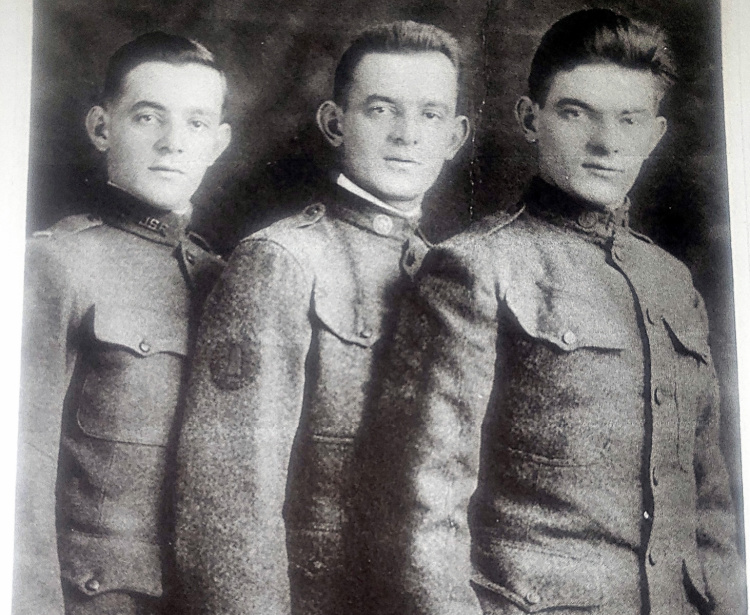
After completing his training, Lieutenant Draper was sent to France, where he served for the duration of the war with the 2nd Infantry Division, American Expeditionary Force. Before shipping out, Draper was issued a sidearm: a Colt Army Model 1901 chambered in .38 Long
Colt.
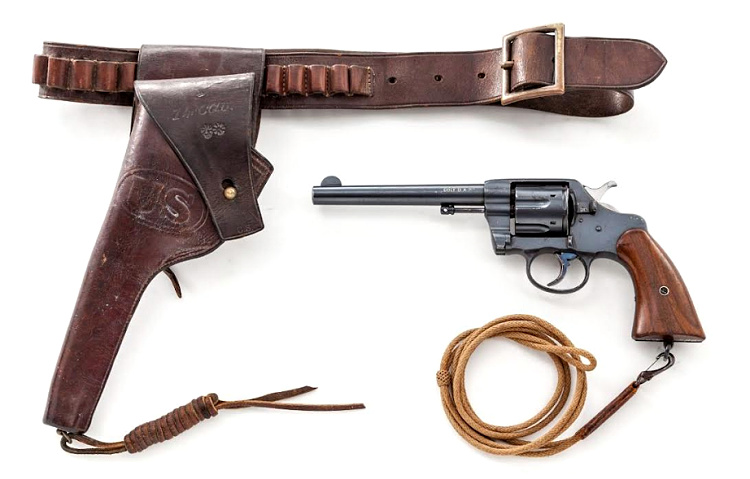
You may be asking, “Why not a Colt 1911?” I get it. The M1911 was, after all, the official sidearm of the US Army at the time. The answer lies in the simple concept of supply and demand. The massive expansion of the Army created a shortage of 1911s, which were, understandably, reserved for frontline troops, along with the new Model 1917 revolver, manufactured by Colt and Smith & Wesson. As an engineer, Draper needed a sidearm, but he was judged to not need a 1911 or 1917.
The Army did, however, have a bunch of older revolvers lying around from the Spanish American War and shortly thereafter. Specifically, the Colt New Army/Navy, which had been adopted in 1892. It went through several updates, which were called the Models of 1894, 1895, 1896, 1901, and 1903. There was also a US Marine Corps Model in 1905.

The Colt New Army (the Navy version was identical with the only difference being the stamp on the grip strap and it may not have a lanyard ring) was the first double-action revolver adopted by the US military that featured a swing-out cylinder, which was released by pulling back on a thumb catch on the left side. It rotated counterclockwise and could be quickly unloaded using the ejector rod on the cylinder.


Lieutenant Draper’s Colt 1901 features walnut grips, though some models had hard rubber instead. While researching this gun, I read that many soldiers carved their names on the inside of the grips. I checked, but no such luck. The only thing there was the serial number, which does match the rest of the gun.
The sights are basic, a rounded front blade sighted through a notch running along the top of the frame. It has a large hammer with checkering for the thumb. The same checkering appears on the cylinder catch. This gun has a lanyard ring, which was standard on later models.
The barrel is marked with the words “COLT’S PT. F. A. MFG CO HARTFORD CT U. S. A. PATENTED AUG. 5, 1884 NOV. 6, 88 MAR. 5, 95” and “COLT D.A. 38.” The bottom of the grip strap, on either side of the lanyard ring is marked “US ARMY MODEL 1901” followed by the serial number. The left side of the frame, just above the grip, bears the initials “RAC.” “RAC” was Rinaldo A. Carr, the government inspector at Colt from 1890 to 1903.
The most confounding thing for me, while doing the research, was the holster. It’s a standard leather flap holster stamped “US” on the outside and “ROCK ISLAND ARSENAL 1903” on the inside of the belt loop. It’s probably the original holster for this gun, which is always nice for these old firearms. But it’s left-handed.
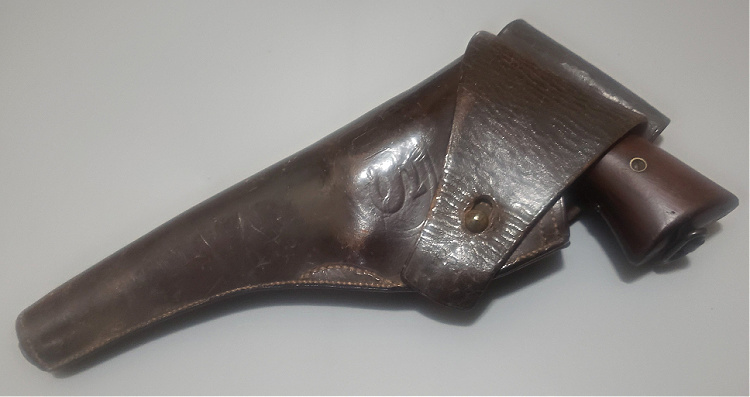
Now, I am no expert on the sidearms of this period so, at first, I just figured Lieutenant Draper was a lefty. But as I looked at more and more photos of these guns, I noticed that all the holsters were like that. I did a little digging and came up with some photos of US soldiers in the Spanish American War and, sure enough, they had the Colt New Army Revolver in left-handed holsters on their right side in a cross-draw configuration.
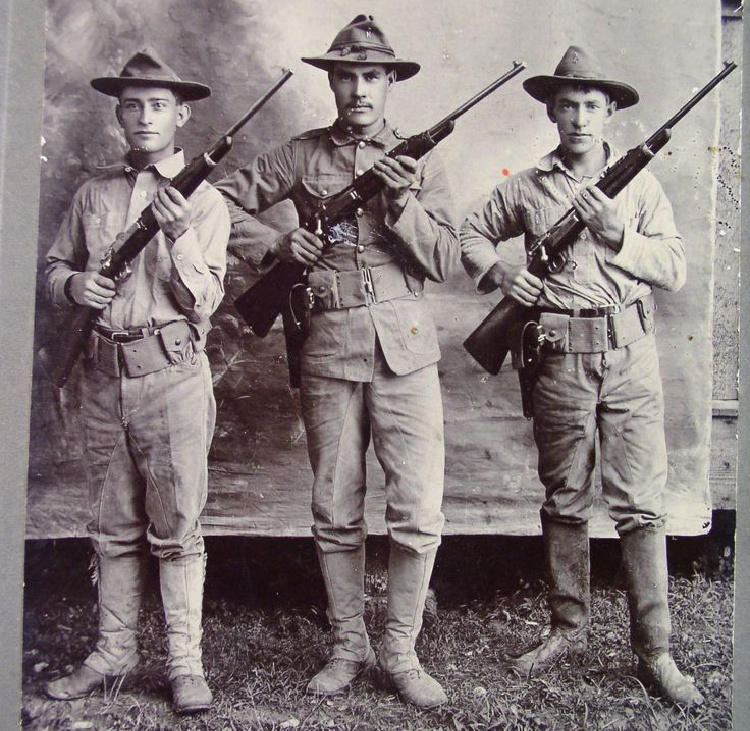
I got on some forum boards and learned that, since the revolver was a secondary weapon, soldiers wore them to be drawn with their secondary, or left, hand. This was particularly true of horse cavalry, which was still a thing, since their primary weapon was the saber, which had to be cross drawn, prompting the need for the same with the pistol.
I also learned that Teddy Roosevelt used a Model 1892 New Army revolver to kill a Spanish soldier during the charge of the Roughriders. But photos of TR show him with a right-handed holster on his right side, while paintings show a left-handed holster on the right side. I don’t know, and I’m just obsessing, but it seems that Regular Army units were meant to wear the lefty holster on the right side. The Roughriders, as an irregular unit, were likely more individual. How Lieutenant Draper wore his is unknown to me.

Even though it’s a well-made revolver with a nice heft and balance, the Colt New Army/Navy was pretty much a failure. It was the first US handgun to move away from the .45, the thought being that a smaller higher velocity round would be adequate while cutting down on the weight carried by the soldier. The problem was that the .38 Long Colt brought less than half the energy of the .45 round it replaced. The War Department was aware of this but decided it would be alright. The Spanish American War, and especially the Philippine Insurrection a few
years later, demonstrated that it was not alright. The complaints about the anemic .38 grew so loud that the Army refurbished and reissued a bunch of the .45 Colt single action revolvers that the New Army/Navy had replaced. So, this pistol, it could be argued, is largely responsible for the American love for the .45 ACP.
After the war, Lieutenant Draper returned to Texaco, where he was assigned to the Panama Canal working on canal locks for oilers and tankers. Thanks to his position with Texaco, Draper and his family were spared most of the deprivations of the Great Depression. In the wake of Pearl Harbor, he was recalled as an engineer to the US Army Reserve, accepting a commission as a colonel. Lieutenant Draper had apparently not returned his Colt sidearm after World War I and Colonel Draper strapped it on again for his second deployment to Europe.

There, along with the 40-plus-year-old revolver, Colonel Draper used his experience in the oil and gas industry to help keep General George S. Patton’s Third Army supplied with gas on its dash across France and beyond. Just in case anyone is wondering, the famous incident where the Third Army ran out of gas was not due to logistical breakdowns, but rather because of British Field Marshal Bernard Montgomery’s massive airborne assault on Holland with its accompanying armored thrust. Personally, I think the gas should have gone to Patton, but, hey, you know what they say about hindsight.
And so, 118 years after its manufacture (the serial number places the date as 1903) and 103 years after James Draper took it on the first of two trips to war-torn France, I have his revolver, and its holster, sitting on my desk. It’s showing some wear, the worst being the corrosion on the left side of the barrel, but the action is still very smooth, even if the double-action trigger seems a little heavy. I haven’t tried to fire it and I won’t.
These guns are available for a fairly reasonable price and the Colt forums told me where to find ammo that’s safe for them. They seem to be very shootable if you pick one up. But this one is not for me. The inside of the bore is in great shape, other than being dusty.
I have no idea when it was fired last, but I’d wager it’s been a long time. Maybe not since James Draper himself. But even though it didn’t see frontline combat in either war, it’s still the sidearm of a man who answered the call and contributed where he could have the most impact. Even though there are millions of guns that fit such a description, it’s rare that we know their owners’ names or stories. That’s what makes this one special and that’s what makes it worth preserving.
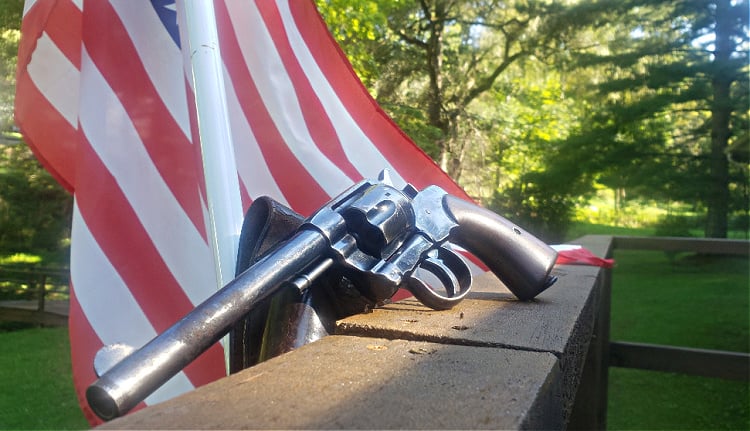
Parts of this article were sourced from Garry James’s excellent article on the Colt Model 1901 Revolver.



Pingback: The Colt Army Model 1901 Service Revolver of Colonel James Draper – Guns and Pride()